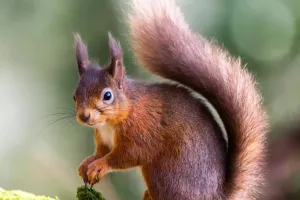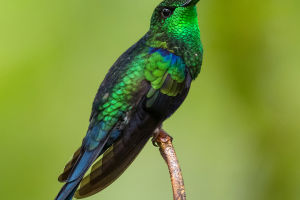Flamingos are famous for their bright pink feathers, stilt-like legs, and S-shaped neck. There is more to a flamingo than its bright pink feathers. Get to know these delightfully unusual birds with 6 fun facts — some of which may surprise you!
1. Flamingo nests are made of mud.
A flamingo’s nest looks like a mini mud volcano, with room for one large egg. Flamingos are monogamous, and mom and dad are team players. Both help to build the nest and incubate the egg. Flamingo chicks hatch with white-gray, downy feathers and straight bills. It takes several years for them to acquire their signature pink color and hook-shaped bills. The Smithsonian’s National Zoo has been home to flamingos since around its founding more than 130 years ago. Bird House keepers have worked to breed flamingos since the early ‘90s and have welcomed more than 120 chicks over the years!
2. Flamingos get their pink color from their food.
Flamingos really are what they eat. Many plants produce natural red, yellow or orange pigments, called carotenoids. Carotenoids give carrots their orange color or turn ripe tomatoes red. They are also found in the microscopic algae that brine shrimp eat. As a flamingo dines on algae and brine shrimp, its body metabolizes the pigments — turning its feathers pink.
3. Flamingos are filter feeders and turn their heads “upside down” to eat.
The term filter feeder may conjure images of baleen whales or oyster reefs, but flamingos are filter feeders too. They eat algae, small seeds, tiny crustaceans (like brine shrimp), fly larvae, and other plants and animals that live in shallow waters. When it’s time to eat, a flamingo will place its head upside down in the water with its bill pointed at its feet. It then sweeps its head side-to-side, using its tongue to pump water in and out of its bill. Comb-like plates along the edge of the bill create a filter for water to rush out, while trapping food inside.
4. There are six flamingo species.
In addition to Caribbean flamingos, there are lesser, greater, James’s (or Puna), Chilean and Andean flamingos. Greater flamingos are found in parts of Africa, Asia, and Europe. They are the largest and tallest flamingo species. Chilean, Andean, and James’s flamingos are found only in South America. Andean flamingos are the rarest of the six species, with fewer than 40,000 birds. Lesser flamingos are found in parts of Africa and southern Asia. They are the smallest flamingos and the most abundant. There are more than 2 million lesser flamingos brightening skies and shores with their pink plumage.
5. Don’t let your eyes deceive you — a flamingo’s knees don’t bend backward!
Flamingo legs actually bend just like human legs. What looks like a flamingo's knee is really its ankle joint. A flamingo’s knees are located higher up the legs, hidden by the body and feathers. Confused? Think of a flamingo as standing on tiptoe. When the leg bends, it’s the ankle you see hinging.
6. Some flamingos live in extreme environments.
Flamingos are typically found in shallow saltwater or brackish waters (where saltwater and freshwater mix). But some flamingo species breed and raise their young in extremely salty bodies of water, called alkaline or “soda” lakes. The high concentration of carbonate salts in these lakes is so corrosive that it can burn the skin, making the water uninhabitable for most animals. Researchers are still uncovering the unique aspects of a flamingo’s physiology — like tough leg skin — that help it survive such harsh waters. The high salt can still be deadly for some flamingo chicks if salt rings build up on their legs, making it impossible for them to walk.


